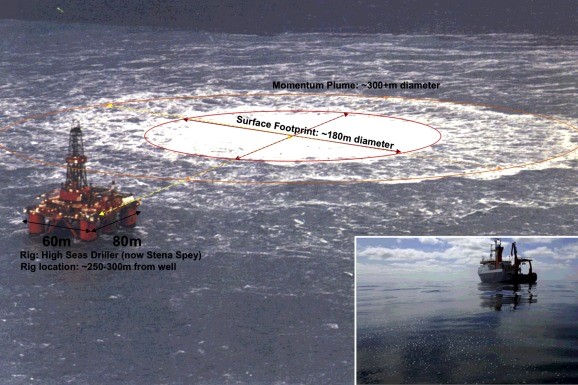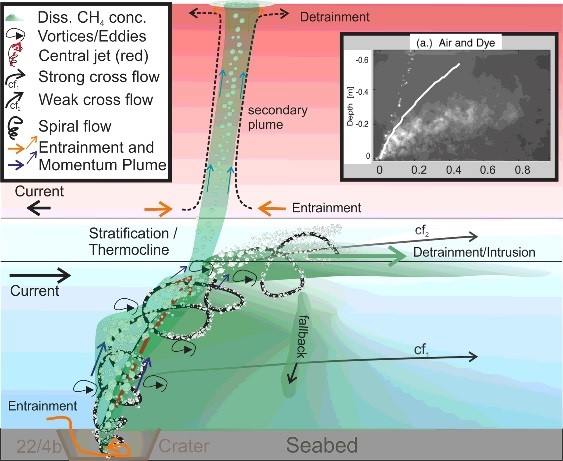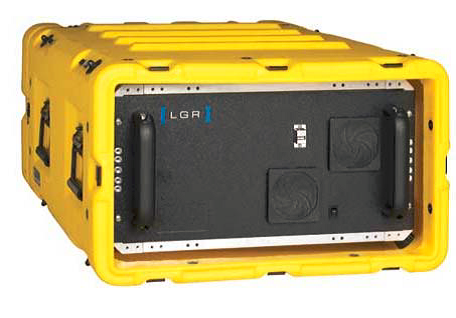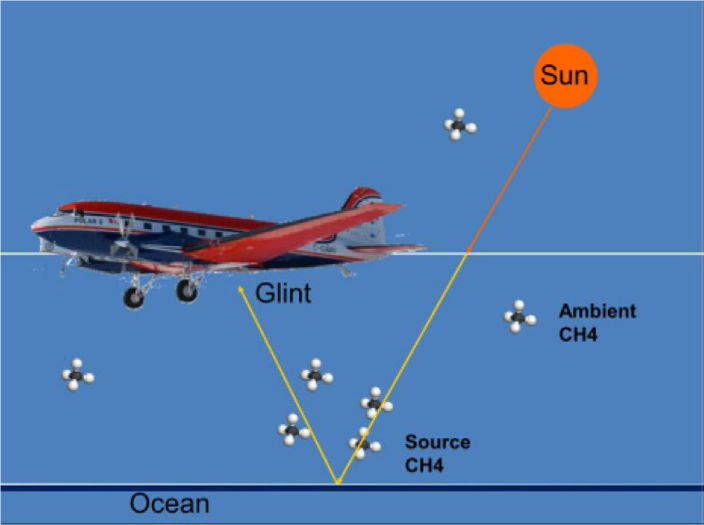ABB LGR-ICOS GAS Analyzers
Release of natural methane hosted in interstitial water of marine sediments from the sea floor by seep processes is regularly observed on continental margins, and the significance of marine methane seepage contribution to the total atmospheric methane budget and global warming is under debate.
AIRBORNE MEASUREMENTS OF METHANE FLUX OVER OFFSHORE BLOWOUT BUBBLE PLUME
Release of natural methane hosted in interstitial water of marine sediments from the sea floor by seep processes is regularly observed on continental margins, and the significance of marine methane seepage contribution to the total atmospheric methane budget and global warming is under debate.
In November 1990, during drilling operations for installation of new offshore well 22/4b in northern North Sea, the company Mobil hit a shallow gas seep at 360 meters below seabed level. The well blew out, creating a massive bubble plume that rapidly decreased after a few days.


After several ship and remotely operated vehicles surveys, it was concluded in year 2000 that there was no evidence of environmental and safety threat on the site and that no further monitoring was required. However, methane concentration and isotopic data collected during subsequent ship and submarine surveys in 2005-2006 still showed the presence of emissions of methane of biogenic origin. As a consequence in 2010 the UK Department of Environment and Climate Change started a study program to precisely assess status of the abandoned 22/4b site and the nature and fate of the gas discharge.
On 3rd June 2011, a group of environmental scientists from Bremen Institute of Environmental Physics (IUP), Alfred Wegener Institute for Polar and Marine Research (AWI) and the German Research Centre for Geosciences performed several flights on-board AWI’s Polar-5 BT-57 aircraft over 22/4b well site, in order to test an infrared passive remote sensing method for measurement of the methane surface flux to the atmosphere. The scientific equipment onboard the aircraft consisted of several turbulence probes, various temperature, pressure, humidity and camera sensors, data acquisition systems and dataloggers, as well as IUP’s custom passive infrared spectrometer with medium resolution called Methane Airborne MAPper (MAMAP). The payload also included an LGR Fast Methane Analyzer with an external pump in order to perform in-situ methane concentration measurements during the flights.

Remote detection of methane mole fraction in the layer between sea surface and flight altitude (“total column”) was performed with the MAMAP through absorption spectroscopy in the short-wave infrared range of the sunlight reflected and scattered by the sea surface (“sunglint”). When measuring potentially harmful gases, the advantage of this approach is that it is safer and easier -from regulatory point of view- to deploy than in-situ ship-based or low altitude airborne measurements in the plume. This work is reported in attached paper “Atmospheric remote sensing constraints on direct sea-air methane flux from the 22/4b North Sea massive blowout bubble plume”.

In-flight infrared measurements with the MAMAP spectrometer were performed at a constant altitude of 650m. This is above the boundary layer, which is the air layer near the sea surface affected by diurnal heat, moisture or momentum transfer to or from the surface, estimated at 150-180m above sea level. Compared with atmospheric background, the remote sunglint measurements did not allow to detect any increase in methane flux exceeding instrument measurement precision. Thanks to its sensitivity, the LGR Fast Methane Analyzer was used as a reference instrument to validate that the MAMAP measurements were reliable. The LGR analyzer in-situ measurements at the top and above the boundary layer in the measurement confirmed the absence of detectable methane concentration increase.
Subsequent model simulations based on measured atmospheric conditions and assuming a local methane source with various strengths allowed to refine the total column assessment. It was concluded that the direct 22/4b methane blowout emissions by ebullition during the overflights were below 10 kilotons per year -potentially even below 5 kilotons per year- which is in line with ship-based observations.
In the future, the equipments and approach used for this work could be used to estimate emissions from other offshore and onshore accidental large scale natural gas releases.
Other articles:
- Palas AQ Guard series launched
- VMM chooses for TAPI-400 O3 monitors again!
- Droplet's Mini Micro Pulse LIDAR
- ISSeP chooses Tekran again
- Cloud, aerosol and precipitation spectrometer with depolarization
- Monitoring low levels of formaldehyde in ambient air
- New carbon dioxide isotope analyzers
- Cloud Condensation Nuclei (CCN) counter
Stay informed? Sign up!
Register yourself for our meetings and trainings. For more details please click on the event you are interested in.Questions? Please ask!
We are happy to answer all of your question, you can even send it online via our contactpage.Contact us